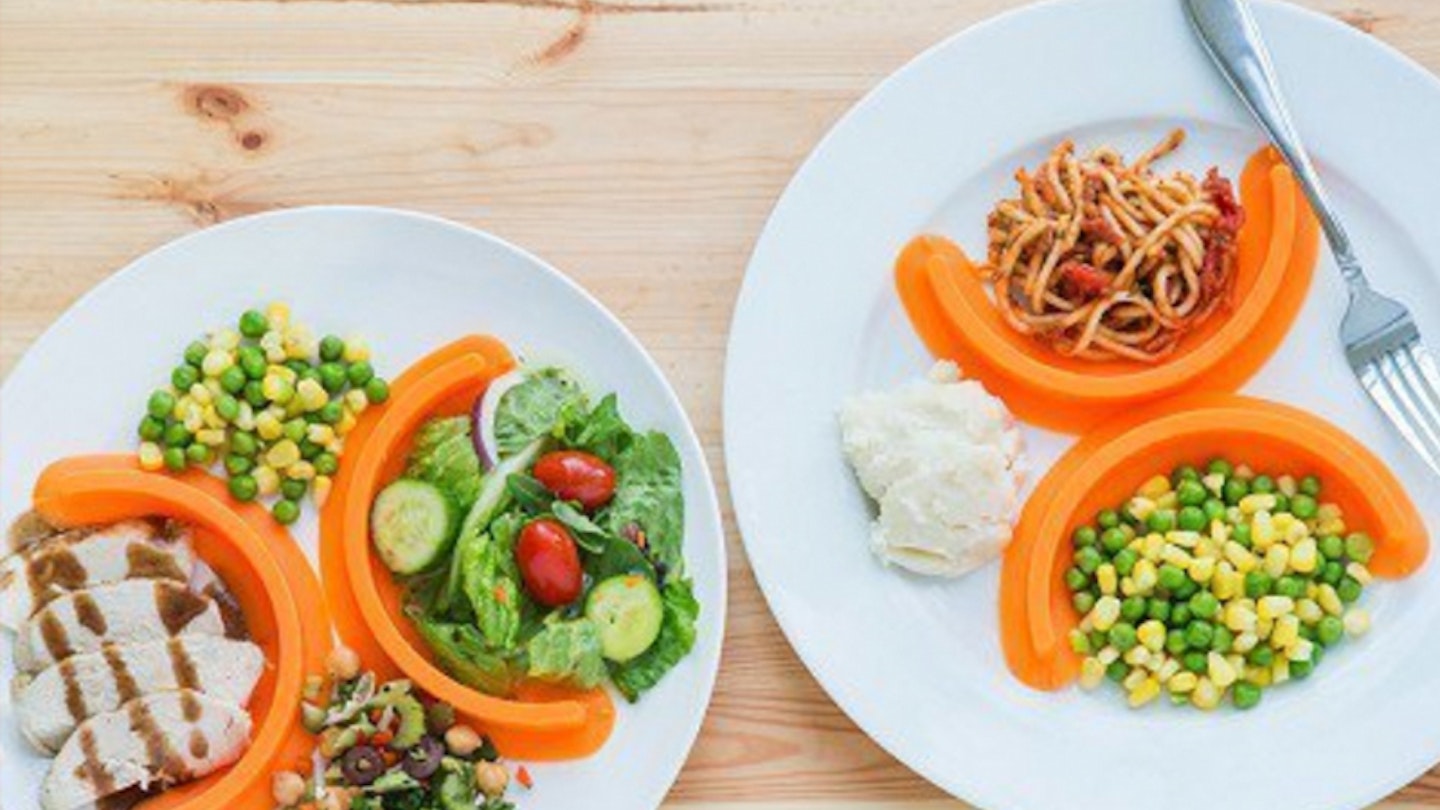If you have a child who is a picky eater, one thing that often really stresses them out and kickstarts a tantrum like no tomorrow is all the different foods touching. If you're trying baby led weaning you want to encourage your child to eat the rainbow. This means their meal sometimes seems like a bit of a mishmash of textures, flavours and temperatures so it's fair enough that your little one doesn't want any runny tomato sauce getting all over their crunchy veg. With this technique, your baby is supposed to be the boss - picking up finger foods and feeding themselves. So, anything that will encourage them to feel better about eating and to make less mealtime mess is ideal.
Enter the plate separator!
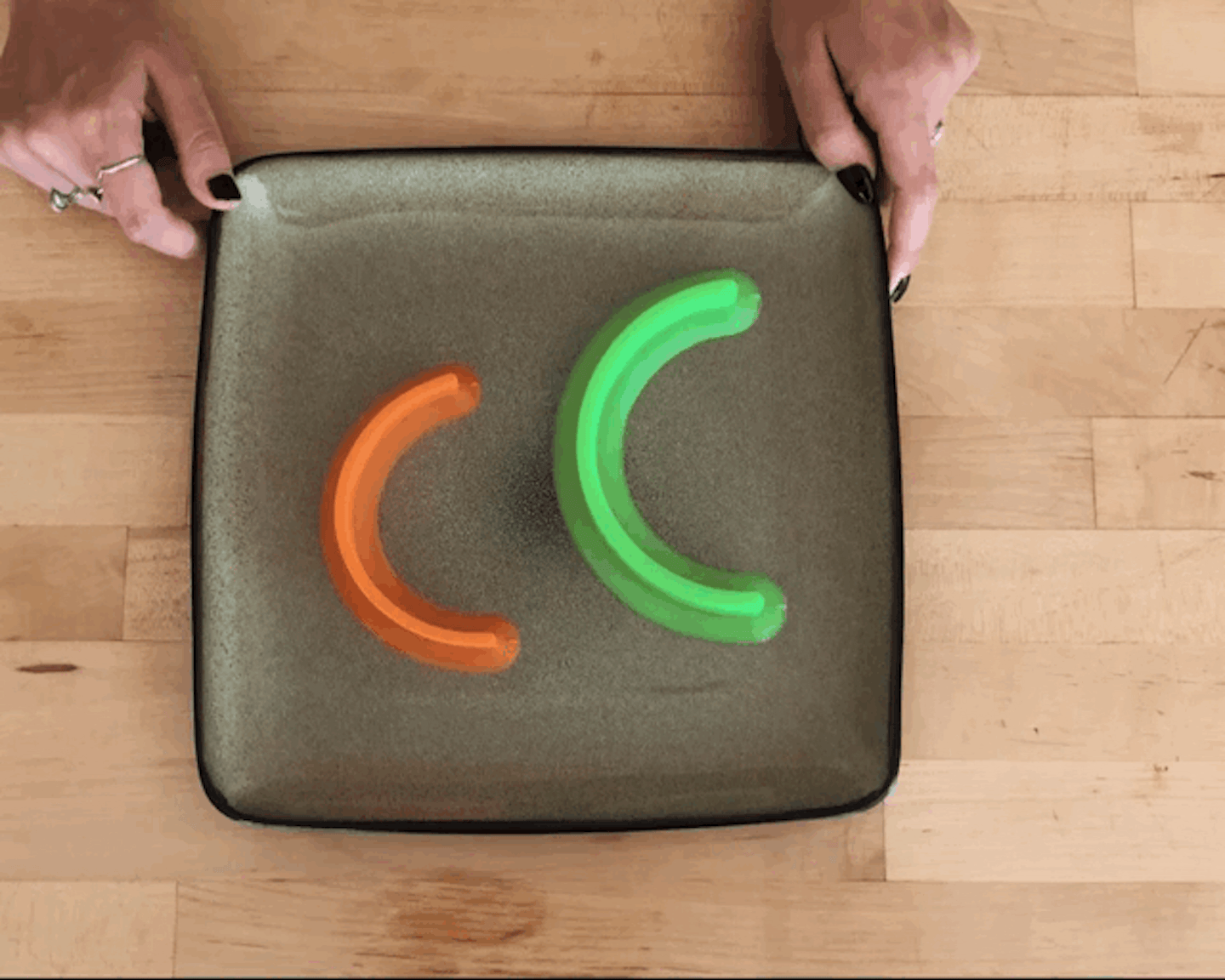
The genius invention is essentially a food divider which sticks to flat plates to prevent food from touching or spreading. You can use the product with plates you already own which removes the need for plastic divider plates.
Not only does it solve a picky eater's worst nightmare by keeping different food groups separate but a plate separator is also helpful for children or adults with special needs, the elderly, visually impaired and anyone who finds mealtimes hard as it can provide an 'edge' to help scoop food onto utensils. The product fits 64grams (1/2 cup) of food inside which also helps you with portion control and nutrition for your little one.
Key features:
-
Strong suction: The device can be stuck to any flat surface and instantly creates a liquid-free suction seal
-
Suitable for any age: Can be used by both adults and children
-
Two sizes: Each FoodCubby pack comes with two sizes so it will fit on different sized plates
-
BPA-free: The product is made from BPA-free silicone making it safe for everyone
Parent reviews:
Plate separators are already proving to be a hit with parents trying to feed their children. On Amazon, one mum described the it as 'a fun addition to the plate' which performed several functions: holding dipping sauces, preventing food from touching by creating 'food compartments' and as a handy aid for children just learning to use a fork or spoon as it helps with their coordination by giving them an edge to push the food against. Kids also apparently love the fact that the plate separator resembles a smile on their plate.
Another mum said the plate separator made a smooth transition for their child as it is 'the slickest little idea for serving meals to kids on "grown-up" plates'. Adding that it was impressive how easily and firmly the dividers stuck to the plates while still being flexible enough to use for a variety of situations. Parents were also pretty pleased that they no longer have to use several different plates to keep their little one happy as it has lessened the number of dirty dishes. Anything that saves parents time and shortens their list of chores is a winner in our eyes!
Plate separators can be purchased here.
CHECK OUT 15 tips for fussy eaters:
Fussy eater tips
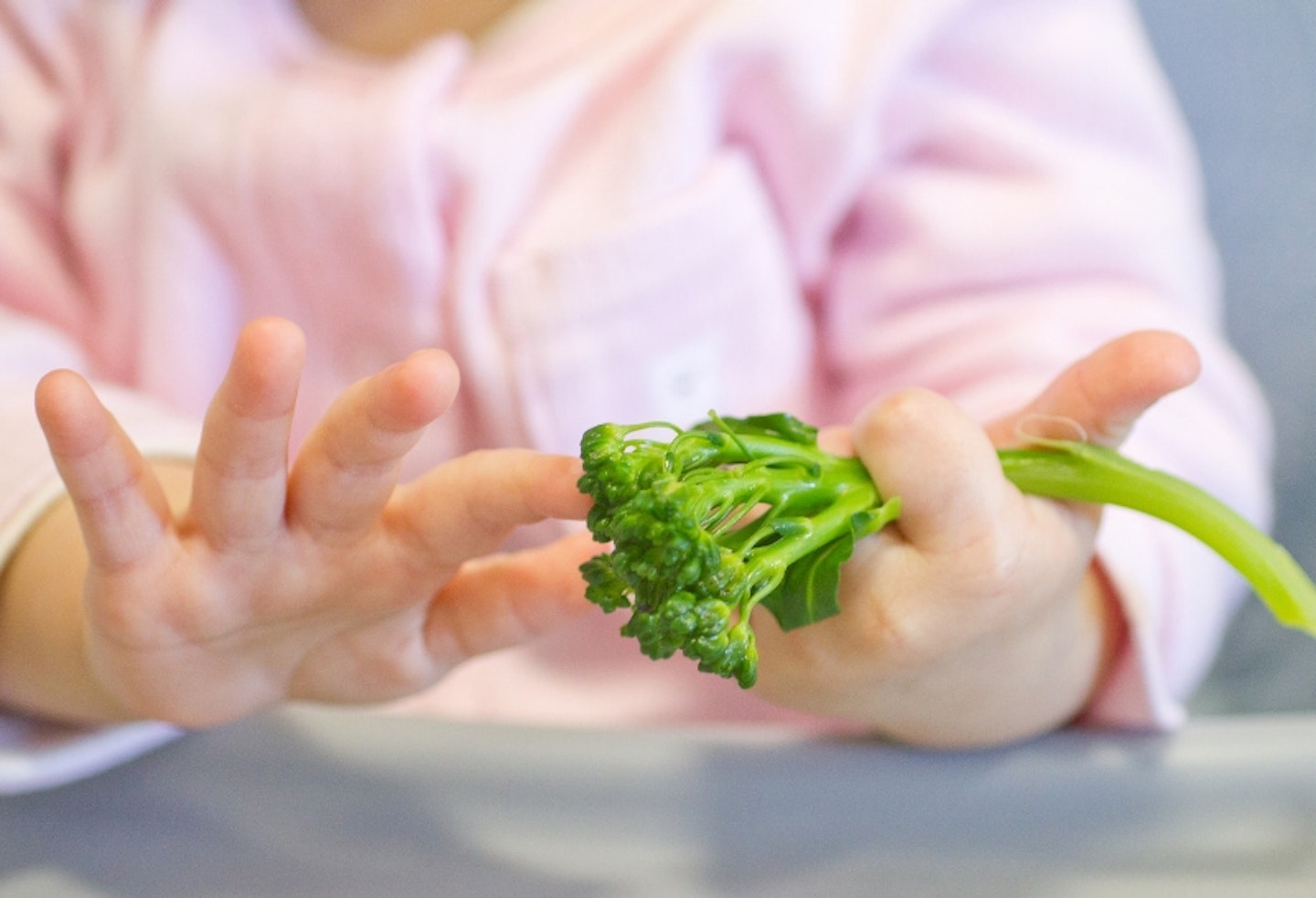 1 of 15
1 of 151) Encourage more adventurous tastes
Picky eating is partly genetic. Some children are simply born fussier than others. But that doesn’t mean parents should just accept picky eating. Encouraging a diverse palate can help to counter this tendency.
Professor Marion believes that what parents do during weaning – or ‘complementary feeding’ as she prefers to call it, to avoid confusion with stopping breastfeeding – can make a significant difference. ‘The period around complementary feeding is a sensitive one,’ she says. ‘Research has shown that if babies are given a wide range of healthy foods from six months onwards, they are likely to develop healthy eating habits.’
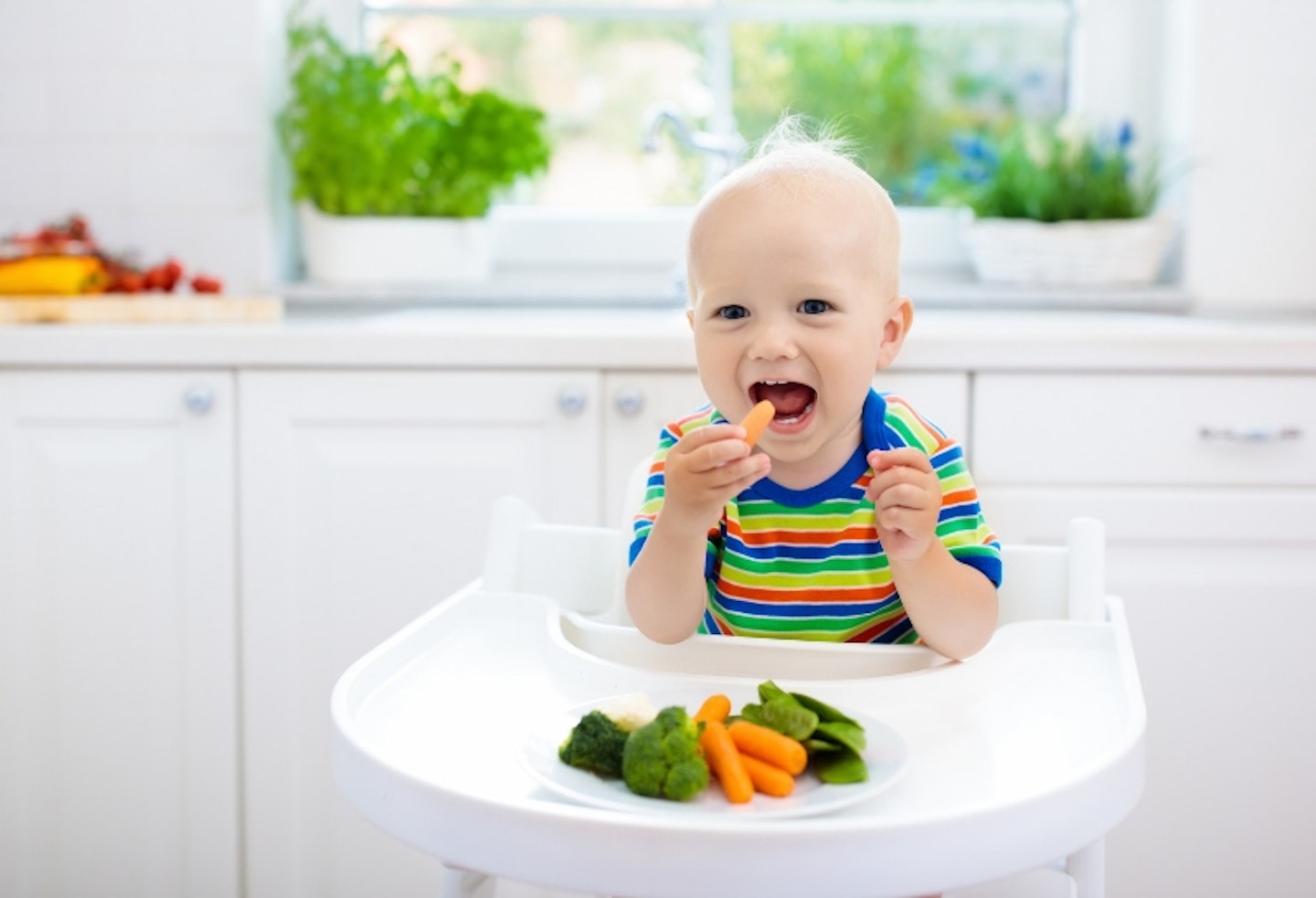 2 of 15
2 of 152) Veggies first
Rather than offering up the food your toddler loves best first, make sure offer a few veggies as a starter, when they are most hungry. If they are truly hungry, they are less likely to be picky about what they do eat.
‘Start with a few sticks of asparagus or chunks of broccoli with butter, before bringing out their main meal,’ says nutritionist Lowri Turner. This should keep his sweet tooth in check.
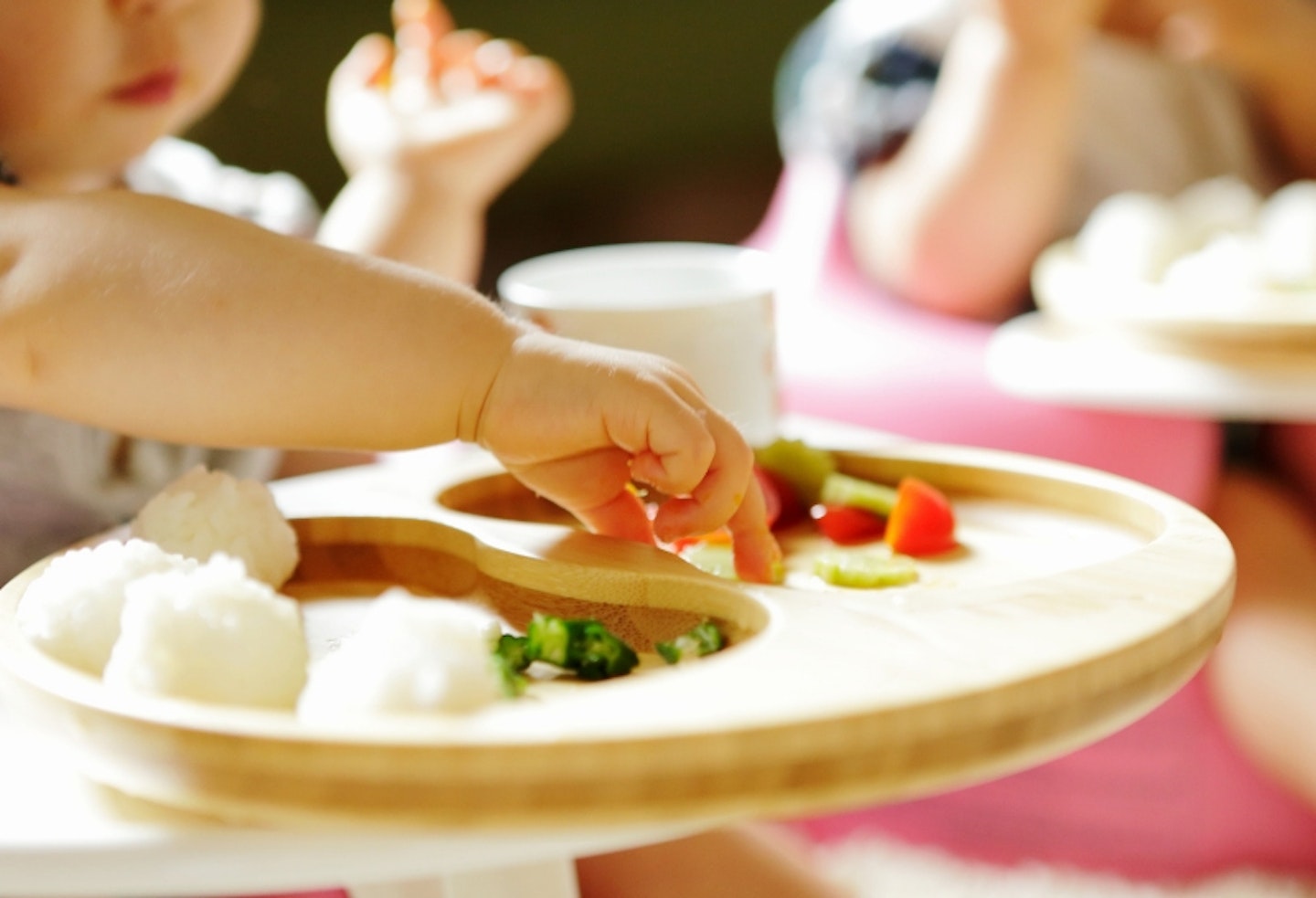 3 of 15
3 of 153) Introduce as much variety as possible in the first weeks of feeding solids
Younger babies tend to accept new textures and flavours more readily than slightly older ones, when a certain natural wariness kicks in.
By bringing as many different foods to the table (or your tot’s highchair tray) between starting weaning at six months and the age of nine months, you’ll maximise the chances of your baby happily eating them longer term. And we do mean lots – aim to introduce five different fruits and vegetables every week.
To make the most of this window of opportunity, vary the textures too. ‘If vegetables or lumpy textures are only given at, say, nine months of age, then this predicts lower acceptance of vegetables and fussier eating later in childhood,’ says Professor Marion.
 4 of 15
4 of 154) Eat adventurously yourself
Babies and toddlers offten mimic those around them, it is a really important way for them to learn and grow. If your toddler sees you enjoying different foods, they will be more likely to try them too. They will be able to see that it isn't so scary after all. Make sure you don’t pass on the vegetables unless you want your little one to do the same.
You can also harness the power of peer pressure. Mealtimes are important for all the family as a focus for communication and bonding. Aim to have everyone eating the same thing in the same sitting as your little one will try hard to eat similar things to those around them. You can invite other mums and their tots over for lunch - ‘Lay out a big picnic with lots of different healthy foods on a tablecloth on the floor and let kids get stuck in,’ says Lowri.
 5 of 15
5 of 155) Sneak veg into your baby’s milk (yes, really!)
The idea of mixing vegetables and milk might turn your grown-up stomach, but this can be a very effective way of ensuring your baby gives them a go. Professor Marion explains: ‘At around six months, add some vegetable purée to breast or formula milk, to give just a taste of this new food. After exposing your baby to a range of vegetables in milk in this way, say over 12 days, then try vegetable purée in baby rice. Finally, gradually reduce the rice component to offer pure vegetable. This will ensure that your baby is given the new flavour alongside a well-liked one.’
 6 of 15
6 of 156) Be persistent
You’ve fed your tot some carrot – or squash, or broccoli – and they are making that screwed up, ‘no way’ face that babies eating something they find unpleasant do so well. No doubt they’ll push it all back out of their mouth with their tongue. At this point, it’s easy to throw your hands in the air and assume they’ll never like this offending food, and stop serving it.
But small children who don’t like something initially might well go on to accept it, if you stick with it. ‘Most new vegetables take at least five to ten exposures to be accepted – possibly even more,’ says Professor Marion. ‘This is the case both with babies and older children, so keep at it!’
 7 of 15
7 of 157) Over-drinking
Over-drinking is one of the main causes of fussy eating. The tiny stomach of a toddler is easily filled up with fluid reducing their appetite for food. Once your baby is at weaning age you could limit milk to 500ml per day and/or dilute 100ml fruit juice with water over the course of the day.
 8 of 15
8 of 158) Watch out for the first sign of reluctance
You might assume you’re out of the woods and your baby’s settled into eating well, but be warned: many children become fussier as toddlers as a natural reluctance to eat new foods kicks in. This could well be a natural instinct: at this age, little ones might begin to move around more independently of their parents. Biologically, being averse to picking up and eating unknown foods – or non-foods – would help keep them from danger.
‘At around 24 months, infants become neophobic – fearful of new foods,’ explains Professor Marion. ‘This means they’re likely to reject them and even reject those they previously liked.’ Frustrating? Very!
But the good news is that most children do grow out of this. In the meantime, keep calm, carry on dishing up and don’t make a fuss about the irritating new preferences your tot seems to have developed. By keeping mealtimes relaxed and not giving attention to this behaviour, they’ll move on from this fussy stage more quickly.
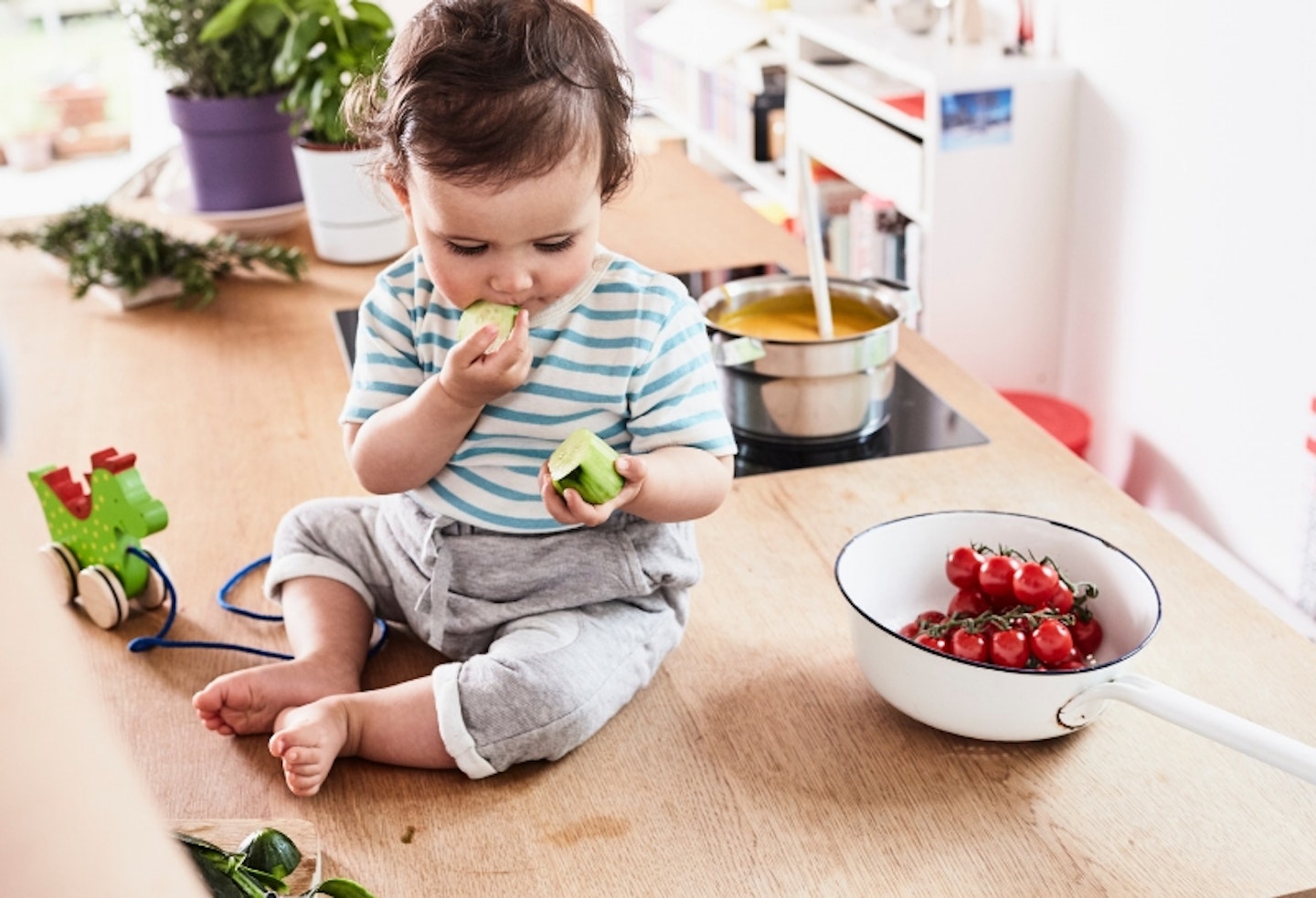 9 of 15
9 of 159) Pair familiar and unfamiliar foods
Young children seem to get overwhelmed by too much newness on their plate all at once. By combining new tastes and old together in a more grown-up version of the milk-and-veg trick above, sampling something becomes a less intimidating experience. Plus, you know that if he doesn’t so much as touch that strange new vegetable, he can still fill his tummy with the rest of the meal that’s served up to them.
Researchers demonstrated the impact this can have when they presented groups of children with new-to-them types of chips and either a familiar or unfamiliar dip. Those with the familiar dip were more likely to try the new chips. So, perhaps make your toddler’s usual pasta sauce, but serve it with gnocchi instead of his usual pasta. Or add a tiny bit of his favourite cheese sauce to a new vegetable to encourage them to try it.
 10 of 15
10 of 1510) Try baby/toddler led weaning
Avoid spoon feeding an older baby or toddler. The idea is that if your toddler has control over their food and are able to pick up, feel the texture of the food and try the bits they like the look off, they will be more likely to experiment and eat a wide range of different things when they are older. You avoid washing up the blender, but be prepared – you'll probably end up with a lot of food on the floor.
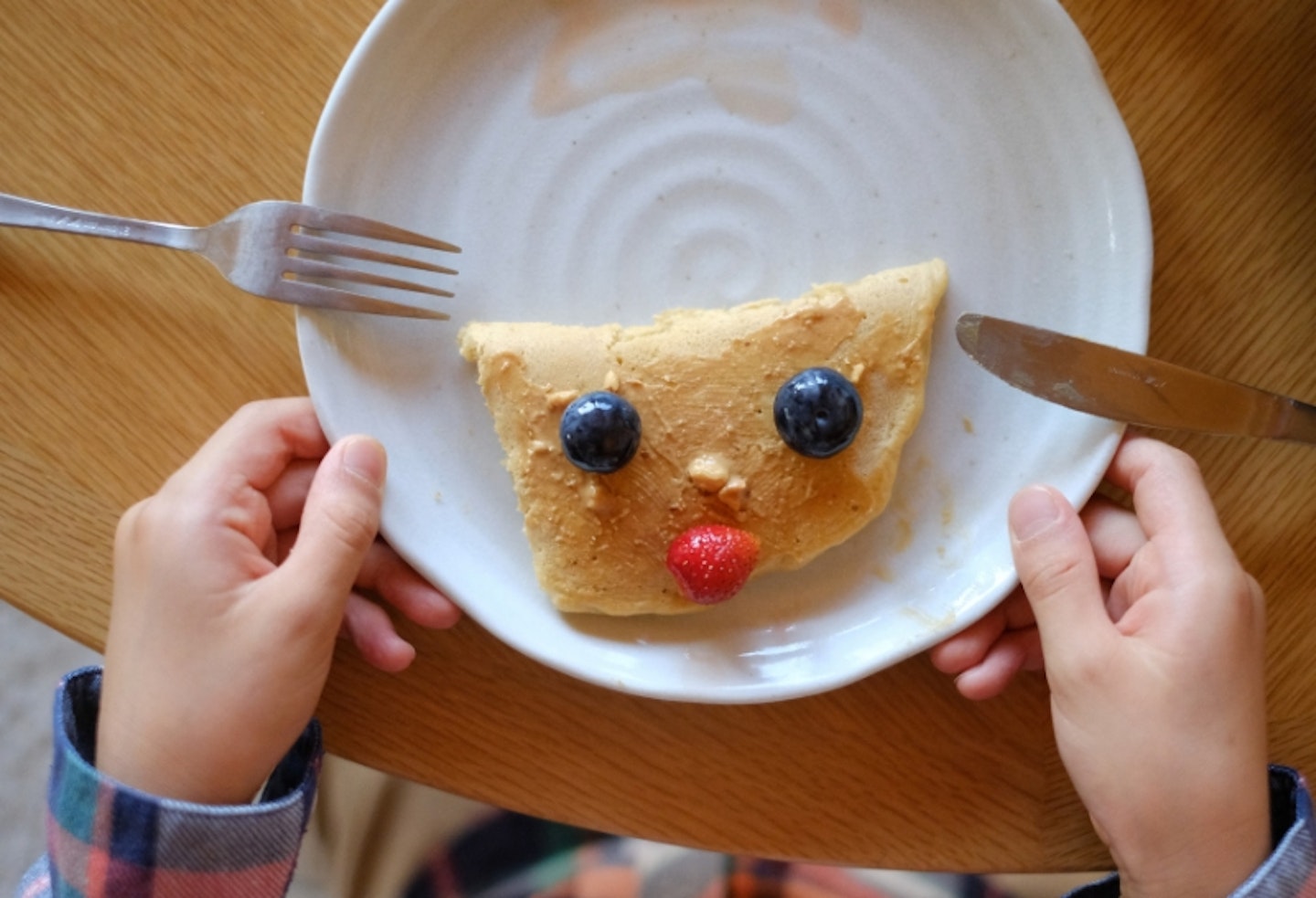 11 of 15
11 of 1511) Make food fun!
For older babies and toddlers, funny faces made out of pieces of cucumber, tomato and sandwich will be popular.
‘Or have a crunching contest with raw veggies,’ says Lowri. ‘The loudest cruncher wins.’
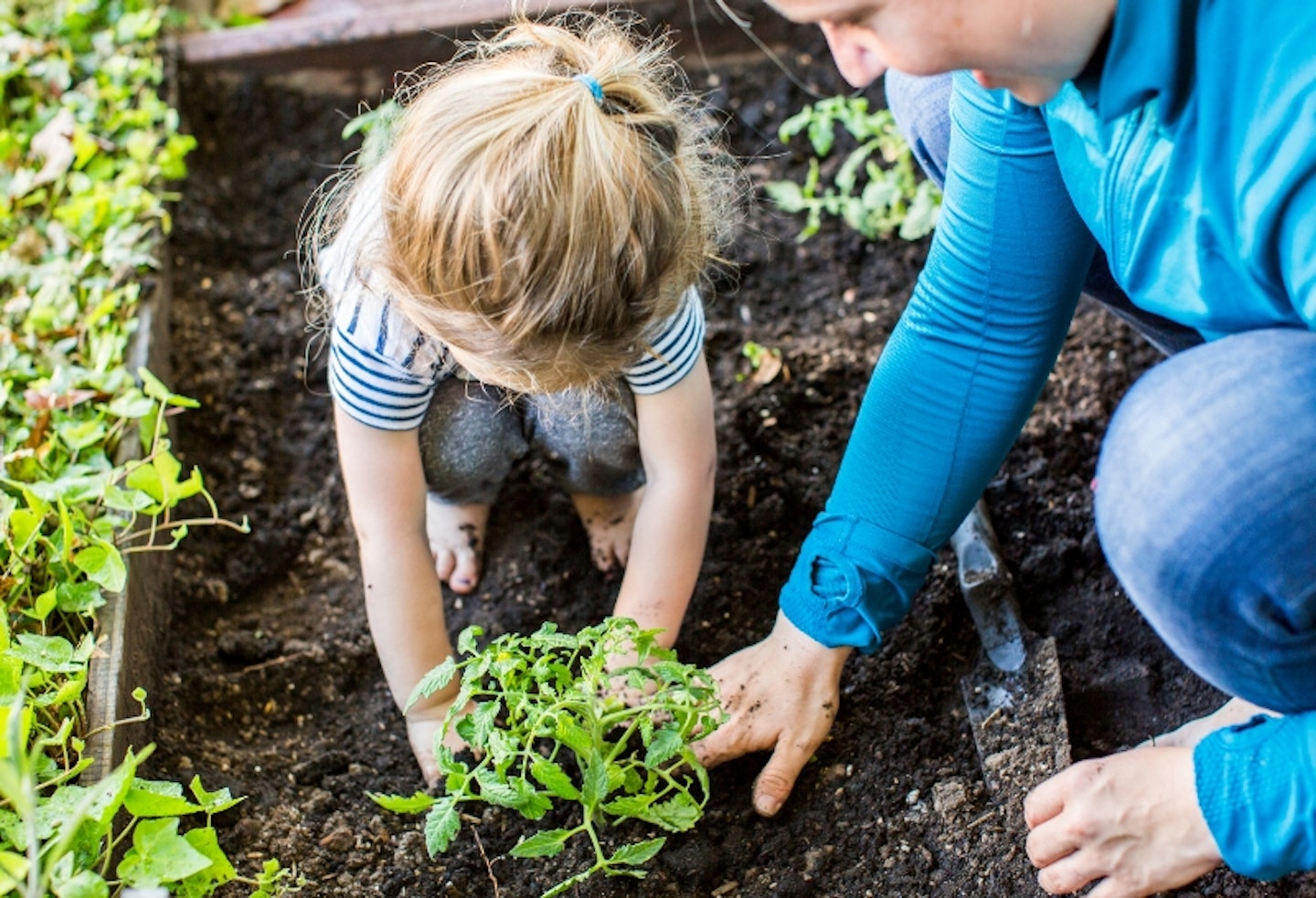 12 of 15
12 of 1512) Get kids involved
When your toddler is old enough, get them involved in the cooking and preparation of food. Even if it just means stirring things occasionally, getting kids involved in the kitchens means they should be more engaged by and interested in the food they eat and cooking in the future.
If you're lucky enough to live somewhere where you can grow some of your own vegetables then this is a great way to encourage children. They will be part of the process, have more of a understanding of where food comes from which should hopefully make them understand waste and encourage them to be excited about trying it once it is grown. Even a simple windowbox with herbs would help!
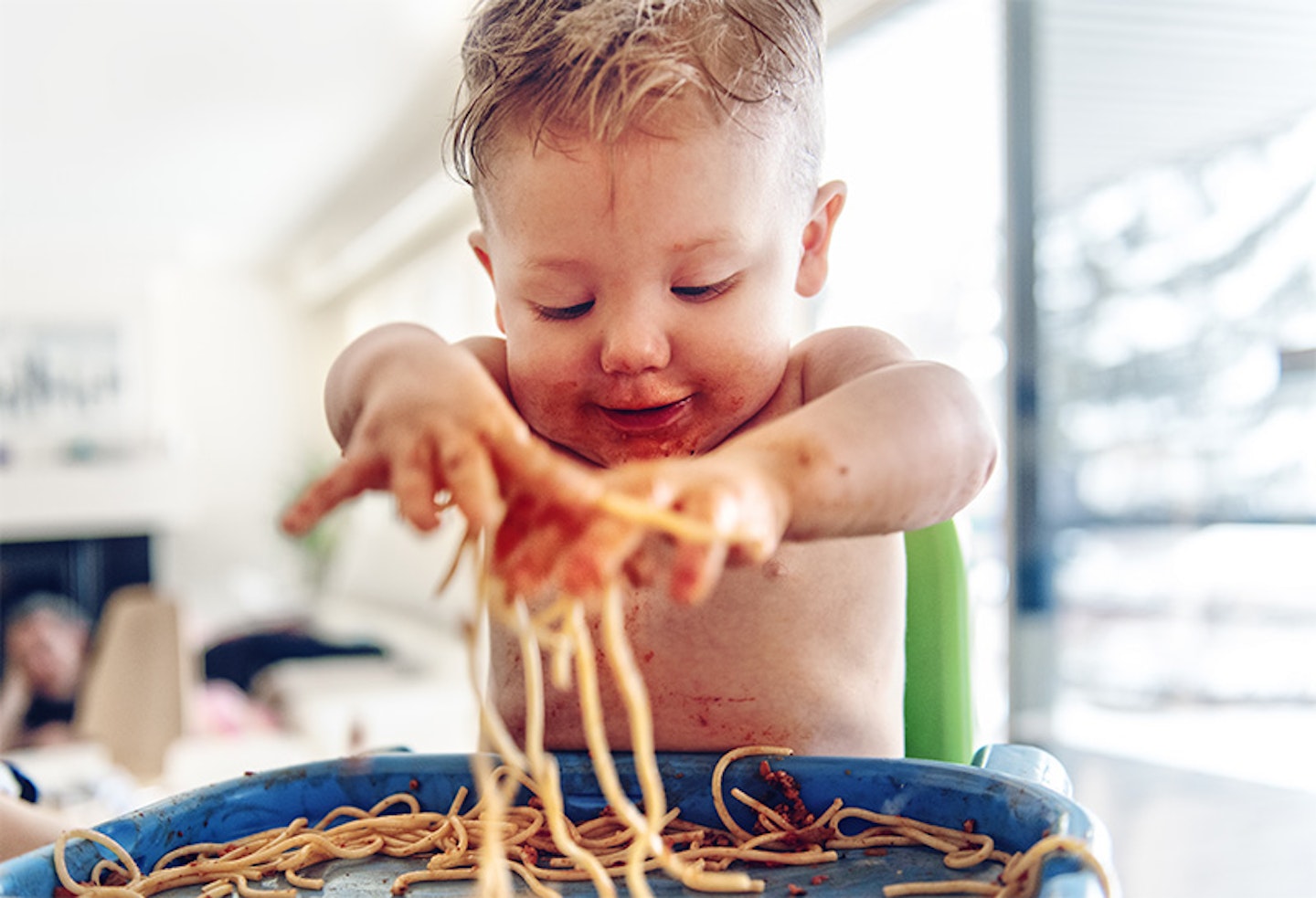 13 of 15
13 of 1513) Portion size
Too many of us override our child’s natural hunger signals by pressurising them to eat more than they want. ‘Pushing food away is an obvious sign they've had enough,’ says Melissa. ‘A good rule of thumb to getting the amounts right is to make sure each food group is served in a portion about the size of their fist.’ That’s a fist-sized food portion each of carbohydrate, protein and vegetables. As their hand grows, so should the amount of food they are offered.
 14 of 15
14 of 1514) Don’t push too hard to ‘just try it’
Mealtimes can so easily turn into a stressful battle of wills, but several research projects have demonstrated that pushing children too hard to taste something simply doesn’t work. In fact it can be counterproductive. Researchers quoted in the academic journal Appetite explained that preschoolers who were pressured to eat actually consumed significantly less than those who were not, and they made more negative comments too.
So easing off with the over-the-top persuasion is the wiser way to get them to gobble up. Staying cool and calm also works - pretend you don’t care if your child doesn’t eat their supper. If they realise what they eatreally matters to you, it can become a power struggle. So pretend it doesn’t and they should have no reason to hold back.
 15 of 15
15 of 1515) Ask for help
It may be a common issue but that doesn’t mean you have to go it alone. If your child is displaying worrying symptoms like behavioural issues, fatigue, digestive problems or weight loss seek advice from your GP.
Will you be buying a FoodCubby? Let us know on Facebook or Twitter!
Make sure you're following Mother & Baby on Instagram for relatable memes, inspiring stories and parenting hacks!
Join the club! Introducing our brand, spankin’ new Facebook group called #mumtribe. Simply search ‘#mumtribe’ into the search bar and meet like-minded mums, win gorgeous goodies and have some fun!
Have approx 60 seconds to spare? Why not join thousands of mums-to-be and start your very own Amazon baby wish list! They're absolutely free to create and perfect to send to the friends, aunties and your mum to make sure you're getting the baby products you really need...Click here!
